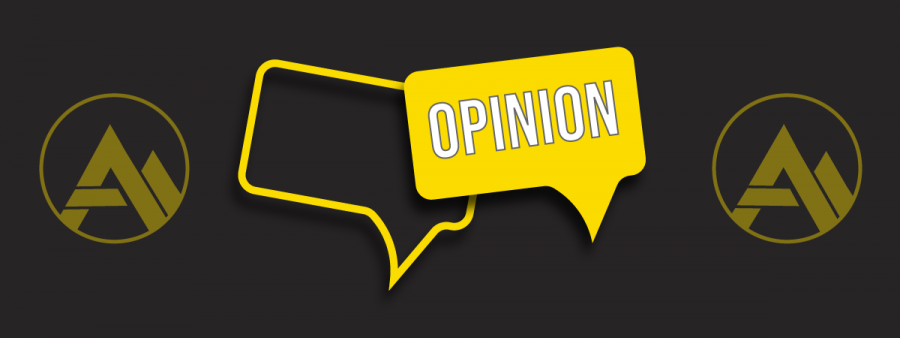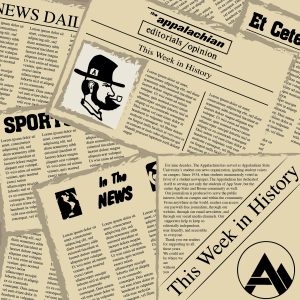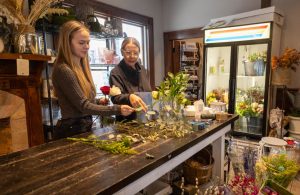OPINION: To bike or not to bike?
September 14, 2021
Boone has previously been called a cycling hub for the Boone Greenway, Viaduct Loop and various cycling events held throughout the summer. However, while recreational biking is a great option in the area, using a bike to get off-campus for more practical uses such as running errands and getting to jobs is often unsafe and inconvenient for cyclists, pedestrians and cars on the road.
While there are many natural obstacles in Boone and on campus, more problems come from road design. Locations essential for students and residents alike are on either King Street or Blowing Rock Road. The Boone Bicycle Initiative has labeled both main roads as “avoid if possible” on the Boone Bike-Ability Map. Ideally, a bicyclist should find other routes or use other transportation methods to get to their destination. However, alternative routes often don’t exist or go out of the way, especially if the destination is on these roads. For instance, going to an off-campus grocery store requires you to go onto Blowing Rock Road. The road is busy and only has a bike lane until the major intersection with U.S. Route 221. The rider must continue the rest of the bike on the sidewalk, even if they try to avoid Blowing Rock Road when possible. Biking on the sidewalk brings more problems such as making pedestrians feel unsafe and can cause drivers to not see cyclists, which can lead to cyclists getting hit. On larger roadways, like Blowing Rock Road, sidewalks are often the only option.
The choice of whether to bike or not to bike is a personal choice. However, students may not have access to either a car or public transport when they need to get to work or run errands. AppalCart routes are very limited during the weekends, and many routes end service before multiple closing shifts end during the week. This means people without a car cannot rely on public transport taking them back from work during the week, especially on late nights and weekends. Students who work at off-campus locations must take unsafe bike routes in order to run errands or get to jobs.
While individual students may not have much say in the matter, the Town of Boone and Watauga County can help with this issue. One option could be extending AppalCart routes at night and on weekends. This task would require a lot of effort and time due to the current bus driver shortage in Watauga County. Still this would not be an impossible project as the hiring process is happening, and AppalCart could possibly find funding to hire new drivers similar to how they bought new buses only a year ago. Another option would be making King Street and Blowing Rock Road more bikeable by adding or extending bike lanes and possibly investing in protected bike lanes. A mix of both solutions could help bikers who use the roads safely.
With both of these possible answers in mind, it is appropriate to mention that many of these problems with biking have already been addressed. In fact, the Town of Boone’s Walk Bike Boone plan, which was last updated in 2014, mentioned several of the same problems around biking main roads that have been brought up in this piece. The short-term recommendations mentioned in the document concerning bike routes in Boone would drastically improve cycling. The plan also listed it may cause up to 60% of Boone residents to seriously consider cycling in Boone as roads become safer.
However, these improvements do come at a cost. For example, completing all of the Priority Projects within the Walk Bike Boone plan involving improvements to bicycle safety would cost a little under $400,000. This is not a small cost especially for a town the size of Boone. Alongside, completing these tasks would require roadways to be closed for possibly years similar to current road work in Boone and causing possible traffic challenges.
Much of this cost can be spread out over time if problem areas are addressed first, and a plan is set in place to complete all of the projects in a timely manner. This lessens the cost immensely as a single-mile long bike lane can cost as little as $5000 dollars. However, even if the largest project discussed in the Walk Bike Boone plan was decided to be done individually it would cut the price down by a third. Ultimately, there are affordable ways to make cycling safer without completely going over the town’s budget.
The Town of Boone and Watauga County can make it safer for those without a car to get where they need to more effectively. This could be in the form of a variety of solutions ranging from improvement in public transportation to investment in Boone’s bicycle route design. Whatever the decision, it should allow for those who don’t have a car to commute in a safe and effective manner.












